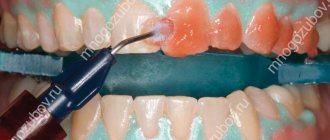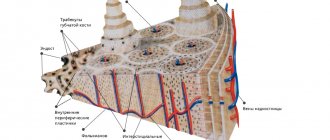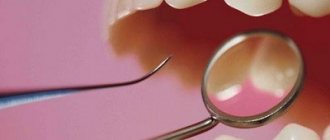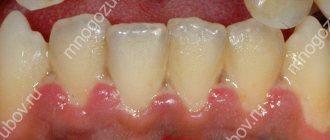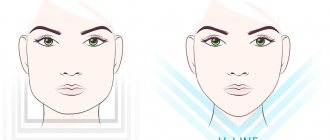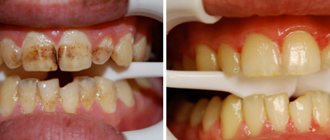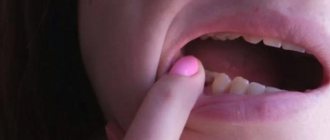From this article you will learn:
- Is it possible to cure caries without drilling with a drill,
- laser and ozone treatment in dentistry,
- the use of enzyme gels to remove caries.
Caries therapy in dentistry is a process that, before filling, requires the complete removal of hard tooth tissues affected by caries. Otherwise, caries will appear under the filling and will proceed unnoticed until pulpitis develops (inflammation of the nerve in the tooth). Removal of carious tissues is traditionally carried out using a drill and special abrasive burs, which seem to cut off the hard tissues of the tooth.
Drills make an unpleasant sound and make you wait for pain to occur, so alternative methods have been developed for patients with high anxiety that allow you to treat caries without a drill. In this case, a laser or a special enzyme gel can be used to remove carious tissue, and ozone can be used to disinfect tooth tissue. These methods make it possible to avoid unpleasant sound and vibration during treatment, and the use of a laser does not require local anesthesia.
Laser treatment of caries: photo
Devices for the treatment of caries without traditional drilling of the tooth with a drill appeared relatively long ago (about 15-20 years ago). However, most dental clinics still do not have these devices, and the demand for unusual treatment of caries without a drill has not become widespread. The reasons for this are quite simple: despite certain advantages, laser and ozone are still inferior to modern drills. And that's why…
Laser in dentistry
There are several types of dental laser: diode, argon, neodymium, erbium, carbon dioxide. The difference between the devices is in power, wavelength, point or constant flow of pulses. Each type of laser beam is used for specific procedures. It is used with equal success for therapeutic treatment and surgical intervention.
Operating principle
A laser is a quantum generator capable of creating a continuous or pulsed stream of light in various spectral ranges, in particular ultraviolet and infrared. Electromagnetic waves emitted by a laser beam have thermal, photochemical, mechanical and energy properties, which opens up wide opportunities for a whole range of dental procedures, including the treatment of diseases of the soft tissues of the oral cavity. There are several types of medical lasers: each of them has its own technical parameters and purpose. Erbium laser is used to work with hard tissues, carbon dioxide is used for surgical procedures, and diode is intended for therapeutic procedures.
Laser treatment of gums and teeth is possible in most cases. Laser technologies are equally successful in therapeutic and surgical procedures.
Indications
- Removal of tartar as part of the prevention and treatment of periodontal diseases.
- Treatment of gingivitis. The diode laser helps relieve inflammation, remove plaque, stop bleeding and reduce trauma during surgery. Ideal for removing fibrous tissue in hypertrophic gingivitis.
- Treatment of periodontitis. In advanced forms of periodontitis, laser curettage is performed to remove pus, plaque and granulation tissue in periodontal pockets. Laser is also effective as an adjunctive anti-inflammatory therapy.
- Loss of soft tissue. Laser treatment of gum recession allows for surgical intervention with minimal damage to soft tissue.
- Treatment of complications associated with pulpitis and periodontitis. Using a laser, granulomas, fistulas, abscesses, and so on are treated and removed.
On the Internet you can find many materials that talk about the treatment of gum periodontal disease with a laser. Periodontal disease is not an inflammatory disease and is not accompanied by purulent discharge or bleeding. When it comes to laser curettage, it refers to periodontitis (some sources and specialists combine these diseases).
Therapeutic laser dental treatment
In therapeutic dentistry, laser therapy is used in the following cases:
- Relieving inflammation.
When treating gingivitis, stomatitis or herpes, electromagnetic waves are directed to the source of infection and destroy pathogenic bacteria. - Sterilization.
Periodontal pockets and tooth canals are treated with a diode laser before installing a filling. - Treatment of caries.
Affected tissues are effectively removed using an erbium apparatus. - Filling.
Curing of light polymer fillings occurs under the influence of an argon laser. - Teeth whitening.
The laser beam activates the hydrogen peroxide-based whitening gel without heating the tooth tissue, that is, without the risk of overheating or burning the pulp. Thanks to the local pulse effect, the patient does not experience discomfort during the procedure.
Treatment of caries with ozone –
Non-contact treatment of caries with ozone consists in the fact that tissues affected by caries are not removed mechanically (or their removal is minimized), but are disinfected using ozone molecules. The latter is triatomic oxygen, which is capable of destroying 99.99% of all cariogenic microorganisms in the carious cavity. You can see what a device for treating caries with ozone looks like in the video below.
The course of the procedure for treating caries with ozone - first, a silicone cap specially provided by the manufacturer is applied to the tooth (Fig. 5-7), from under which air is pumped out and something close to a vacuum is created. Then ozone is supplied to the cap, which acts on the microflora, killing 99.9% of all pathogenic bacteria. Within 20-30 seconds, all cariogenic microorganisms die.
- The advantages of treating caries with ozone are that you can treat teeth without a drill (but only very small carious defects), in other cases you will still have to drill, which means you will have to do anesthesia. That's basically it.
- Disadvantages of dental treatment with ozone: in 99% of cases, teeth will still have to be drilled.
If you do not drill, a large amount of tissue may remain inside and outside the tooth, which is relatively softened and cannot bear the full load. Imagine that you are placing a permanent filling on demineralized soft dentin or enamel (and it is hard). As a result, when teeth are closed and when chewing hard food, the load placed on the filling will be transferred to the surrounding tissues (enamel and dentin), which are softened and cannot withstand such a load. There will be pressure, the filling will fall out... As a result, the tooth will have to be treated again.
Conclusions: the use of such devices is advisable only in pediatric practice, when it is not possible to use a drill. In this case, the softened dentin and enamel are first scraped out with curettage spoons, but before this, it is optimal to apply a special enzyme gel into the carious cavity, which dissolves the carious tissue. And only after this the remaining tooth tissue is disinfected with ozone and a filling is placed. How enzyme gels work – read below.
Application of laser in dental surgery
During surgery, a laser device is used for painless and bloodless tissue dissection—during the procedure, the beam instantly seals the vessels. The incision is smaller and thinner than with a scalpel, so no stitches are required during the operation, and after the wounds heal there are no scars or scars. In dental surgery, laser is used to solve the following problems:
- Removal of tumors.
The liquid inside the papilloma, cyst or fibroma is evaporated under the influence of electromagnetic waves. - Carrying out dental implantation.
Thanks to the laser, implant installation is delicate. Thanks to laser implantation, the soft tissue contour is better preserved. - Plastic surgery of the frenulum of the lips and tongue.
The fold is excised lengthwise or crosswise depending on the clinical case. - Gum correction.
Excess tissue is trimmed before prosthetics, filling or orthopedic treatment. The laser is also used for gum surgery after implantation or if there are other indications.
Types of laser operations
- Laser gum gingivoplasty is performed in cases of severe recession (atrophy) of soft tissues. Usually this condition is accompanied by detachment of the gums from the roots of the teeth or exposure of the root region. The procedure involves separating and transferring your own graft (a thin flap of mucous membrane) and implanting it into the affected area.
- Laser gingivectomy is prescribed for hypertrophy or asymmetry of the gums to give the gingival margin a more natural outline. The operation is also carried out according to absolute indications: when large periodontal pockets are formed, characteristic of advanced periodontal disease. Excess gum tissue is excised and cauterized with a laser beam to prevent infection.
- Gum vestibuloplasty surgery is performed for aesthetic purposes, as well as to prevent periodontal tissue recession. Most often it is prescribed to patients with a small vestibule of the oral cavity. The mucous membrane is dissected at the junction of the upper lip with the gum, the muscles and ligaments are moved back to the required distance, and then they are fixed with sutures.
Indications and contraindications
With the help of electromagnetic waves, it is possible to achieve positive therapeutic results even in the most difficult situations, and the absence of the need for anesthesia allows the device to be used for people with allergies to painkillers. The use of laser in dentistry is one of the safest and most effective methods of treatment, which is indicated for almost everyone. However, there is still a small list of contraindications.
- Nervous system disorders
- Late stage diabetes mellitus
- Kidney failure
- Oncological diseases
- Pregnancy (1 - 6 months)
- Open tuberculosis
- Elevated thyroid hormone levels
- Allergy to sun rays
Attention!
Insufficient qualifications of a specialist and failure to comply with safety rules significantly increase the risk to the patient’s health during laser treatment. Contact only trusted clinics, where your eyes are protected from radiation with special glasses, and the room is brightly lit during the procedure.
Indications for use
- Primary carious lesions in the area remote or close to the pulp;
- Secondary carious lesions that contain composites (smaller cavities or remains of composite) or cements;
- Conditioning the dentin surface to improve the adhesion of fillings in cavities that have been prepared using a laser or rotary instrument;
- Preventive sealing of molars and premolars not affected by caries;
- Extended fissure sealing after preliminary preparation of carious fissures;
- Reducing the number of microorganisms in the root canal after mechanical treatment during vital extirpation or treatment of an infected canal.
Advantages of the method
Today, laser dental treatment in Moscow is widespread in dentistry. Despite the high cost, it is deservedly popular among patients who appreciate the advantages of laser treatment.
- Delicacy.
The absence of unpleasant noise and vibrations makes the operation easier. - Short duration of procedures.
Depending on the nature of the manipulations, the process takes from two to twenty minutes. - No need for anesthesia.
The device does not touch the tissues of the teeth and gums, but acts at a distance, so there is no pain from mechanical action. - Accuracy.
The rays are directed only at the affected tissues, healthy areas are not damaged. - Reduced injury rates.
The laser seals the vessels and edges of the wound, so even complex operations do not require stitches and bandages to stop bleeding. - Fast rehabilitation.
After treatment, the incision heals in a matter of hours and is not accompanied by swelling or pain.
Application of enzyme gel –
Instead of a drill, special enzyme gels can be used to remove caries, which dissolve only the tissues affected by caries, without touching the healthy hard tissues of the tooth. This is an excellent tool for use especially in children's practice. There are a large number of manufacturers of such products, and one of the options is BRIX 3000 enzyme gel, the principle of operation of which you can see in the videos below.
The enzyme gel is introduced into the carious cavity for about 2 minutes, after which the softened carious tissues are scraped out of the carious cavity using a special tool. After this, the cavity is washed out and filling of the tooth can begin. True, in some cases it may be necessary to use a drill to smooth out the edges of the tooth enamel hanging over the carious cavity.
Application of enzyme gel –
Treatment of cysts and granulomas with laser
Granuloma usually occurs as a result of poor treatment of caries and pulpitis. The disease is asymptomatic at the first stage, and is later accompanied by swelling of the gums, pain and darkening of the enamel. When treating dental granuloma with a laser, the affected area is drilled and an electromagnetic beam is sent into the hole, destroying the contents of the cyst and sealing the vessels. The doctor then installs a filling.
Without timely treatment, the granuloma develops into a cyst, which can provoke even more serious complications. Gentle treatment of dental cysts with a laser is considered a good method, as it allows you to save the tooth. The procedure takes place without pain, stress and stitches. In addition, treatment of a dental cyst with a laser without removal eliminates the risk of re-development of inflammation. The patient’s comfort and the absence of complications justify the additional costs, because the price when treating a dental cyst with a laser is higher than when using other methods.
Contraindications to treatment
Like any technology, laser has contraindications that prevent its use in a number of cases, including:
- oncological diseases (especially malignant tumors in the oral cavity, head and neck area);
- tuberculosis;
- severe forms of diabetes mellitus;
- cardiovascular diseases;
- bleeding disorders, a number of autoimmune diseases.
If contraindications are suspected, the doctor may refer the patient to undergo additional diagnostic procedures.
How much does laser dental treatment cost?
As a rule, prices for laser dental treatment in Moscow depend on the type of dental disease and the severity of the pathology. You must be prepared for the fact that in any case it will be significantly higher than when using classical methods. Treatment of caries at the initial stage of the disease will cost from 800 rubles. The price for treating a dental cyst with a laser without removal will be approximately 1,500 to 2,000 rubles. For laser whitening you will have to pay from 8,000 to 11,000 rubles.
Obviously, the high cost of therapy is the only drawback of this technology. However, numerous rave reviews about laser dental treatment confirm the fact that patients are willing to pay for comfort, efficiency and peace of mind, the absence of irritating drill sounds and the frightening prospect of using anesthetics.
Advantages of JSC "Medicine" (clinic of academician Roitberg)
Our medical center has been providing dental services since 1990. Staff regularly take courses to improve their skills and master new technologies.
Specialists have at their disposal modern equipment that ensures high diagnostic accuracy and impeccable effectiveness of therapeutic and aesthetic effects using laser radiation.
Thanks to the high level of comfort, you do not feel like a hospital patient. Due to this, you will not feel tense while restoring the shape of your gums with a laser.
You can easily come to us by public or private transport. The medical center is located in the Central Administrative District of Moscow (CAO) at 2nd Tverskoy-Yamskaya Lane, 10, and you can reach it from the Mayakovskaya, Belorusskaya, Novoslobodskaya, Tverskaya, " Chekhovskaya" in no more than 5 minutes. Those who come to the reception by private car will not have any difficulties finding parking.
Our clinic is especially proud of its extremely responsible approach to the sterilization of instruments and materials. Since the beginning of practice, not a single case of infection has been registered at the medical institution.
Method of treatment
Laser treatment of gums takes place in several stages. The nuances depend on the specific procedure and the number of manipulations required. Before using the laser, the patient wears special safety glasses.
- Diagnostics. Identification of contraindications to the use of laser. A panoramic photograph of the jaw, a blood test, taking smears from the mucous membrane, microbiological studies and other diagnostic procedures related to the inflammatory process in periodontal tissues.
- Professional cleaning and sanitation of the oral cavity.
- Conducting anesthesia (if necessary).
- When using a laser therapeutically, in particular when cleaning periodontal pockets, a marking photosensitizer gel is first applied, which highlights areas of plaque and dental plaque accumulation. During surgical procedures, additional protection of surrounding tissues is required.
Advantages and disadvantages
- Laser treatment of gums allows you to quickly cope with pathogenic bacteria. When the laser comes into contact with the mucosal surface, a photocoagulation film is formed, which prevents infection and re-inflammation.
- The beam operates with high precision even on a minimal working area, which allows you to preserve the maximum volume of healthy tissue.
- No bleeding or serious damage during surgical procedures.
- The use of laser accelerates the process of tissue regeneration.
- Possibility of treating children and pregnant women.
- Quite a large number of restrictions.
- High cost of treatment.
Preparatory activities
Before removing a tooth, the dentist must carry out several mandatory preparatory procedures in order to determine the indications and limitations:
- Visual and instrumental examination of the oral cavity , determining the location of the problem unit that is subject to extraction.
- A specialist will study a person’s medical history to identify the category of diseases in which laser extraction is impossible or the risk of complications is high.
- The appointment of radiography is necessary to determine the structure and location of the roots and the quality of bone tissue.
- Conducting a blood test (if indicated) to detect the presence of infection.
- Selection of the type of anesthetic based on the patient’s well-being and existing health problems.
Special recommendations are given to the patient regarding his behavior and diet before surgery. So, he should not use painkillers , since taking them even a day before the extraction can affect the effectiveness of anesthesia.
It is also recommended not to eat before the procedure itself . The last “dense” snack should be 2-3 hours before surgery.
Dental implantation
- — cutting the gums to install implants,
- — opening of implants after their engraftment,
- — antiseptic treatment of the implant bed,
- – treatment of peri-implantitis – inflammation around installed artificial roots
Dental restoration through implantation is one of the main indications for the use of a laser device. “Laser scalpel” allows you to create not only aesthetics of the gums, but also significantly reduce the rehabilitation period due to less tissue trauma: swelling and pain are reduced, bleeding from the wound stops, tissues heal 2 times faster.
BASIC CONCEPTS ABOUT LASERS
The term "laser" is an abbreviation from English. Light Amplification by Stimulated Emission of Radiation, which translates as “light amplification through stimulated emission.” In a laser, an active medium is stimulated to produce photon energy, which is delivered as a beam of monochromatic light of a specific wavelength. Wavelengths in the range of 193–10,600 nanometers (nm) are used in medicine and dentistry.
Soft and hard tissues of the oral cavity have a distinct affinity for absorbing laser energy of a certain wavelength. For example, an erbium-chromium laser (Er,Cr:YSGG) contains erbium and chromium ions, as well as yttrium-scandium-gallium garnet crystals and, when excited (pumped by an electric current), emits at a fixed wavelength of 2,780 nm. In diode lasers, the excited substance is a semiconductor that operates at wavelengths of 810–980 nm.
The clinical performance of lasers is influenced by many parameters such as power, operating mode, delivery system, etc. A detailed description of how lasers work is beyond the scope of this article, but it is important to understand the basic principles of laser physics before selecting a laser for your dental practice. Understanding these principles will allow you to make an informed decision about the type of laser that will provide the most benefit to you and your patients.
Examples of work “Before” and “After”
Gap between the front teeth - diastema
Case: Gap between the teeth and complaints about the aesthetics of the smile Work: 6 Empress Esthetic veneers on the front teeth and a metal-ceramic bridge on the lateral chewing teeth on the left Time: 6 days Number of visits: 3 Cost: 135,000 rub.
Restoration of anterior teeth with Empress veneers
Case: the patient complained of unsatisfactory aesthetics of the front teeth and a gap between the teeth.
Restoration of front teeth with ceramic veneers (May 2012)
Case: I went to the clinic with a complaint about the unsightly shape and position of the central incisors on the upper jaw.
Aesthetic restoration - lumineers (July 2013)
Case: the patient complained of unsatisfactory aesthetics of the anterior teeth (enamel color, crooked incisors).
BENEFITS OF USING LASERS FOR THE PEDIATRIC DENTAL PRACTICE TEAM
Pediatric dentists take great pride and satisfaction in providing care to their patients.
For many, dentistry is more than a career, it is also a calling that is personally fulfilling for a variety of reasons. Becoming a certified laser dentist requires specialized education and training, which instills a new passion for the technical aspects of dentistry and provides a higher level of skill and knowledge. Every time a dentist and his team are able to use their skills and technology to improve a patient's condition, it brings a sense of fulfillment and personal satisfaction. In addition, lasers can significantly improve productivity. Using a laser, the clinician is able to treat multiple quadrants in fewer visits because there are no restrictions imposed by the dosage of local anesthetics. In addition to the ability to perform more procedures in a single visit, laser technology allows the addition of new procedures already discussed, such as frenectomy and other types of soft tissue surgery or endodontic treatment.
SOFT TISSUE PROCEDURES
The combination of analgesic and hemostatic properties of the laser allows most soft tissue procedures to be performed with minimal or no local anesthesia and, in the vast majority of cases, without the need for sutures.
Therefore, wound healing occurs faster, with less postoperative discomfort and less need for analgesics after surgery. In addition, since the laser has disinfectant and bactericidal properties, the need for postoperative antibiotic use is reduced. Clinical applications of soft tissue lasers in pediatric dentistry include frenectomy, operculectomy, prevention and treatment of pre-eruptive caries and preparation of teeth for orthodontic treatment, gingival grafting, gingivectomy, removal of mucosal lesions, biopsies, and treatment of aphthous ulcers and herpetic lesions.
Laser frenectomy to correct a labial or tongue tie in infants, toddlers, and older children can be performed in a doctor's office. The positive effect of this procedure on the growth and development of the maxillofacial region of a child patient in terms of improving feeding and swallowing ability, speech development, and caries prevention is generally recognized.
Possibilities of laser dentistry
Dentistry using laser is universal. Today, professionals can treat not only caries, but also various gum diseases and combat many problems. Modern technologies allow for high-quality hygiene.
Is the tooth badly damaged? The laser will help cure it. Moreover, you do not have to visit the clinic 5-10 times. Usually 1-2 receptions are enough.
Are you correcting your bite? The laser will allow the doctor to take an ideal impression of the teeth and accurately select the necessary braces. Your child will be captivated by the process. He will not resist correcting the bite.
Do you want to save your child from gum disease and other problems? In this case, it is also worth using the services of laser dentistry.
Do you need oral surgery? And in this case, you can use modern technologies. They are suitable, for example, for trimming the frenulum of the tongue. Moreover, all operations are carried out in the shortest possible time and do not cause pain or discomfort. The interventions do not require long-term recovery and do not lead to severe bleeding or the occurrence or spread of infection.

